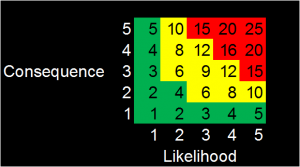In late October 2013 ISO (International Organization for Standardization) decided to move forward with the development of an ISO standard that will replace OHSAS 18001 Occupational health and safety management systems – Requirements (British Standard Institute) within the next three years. The ISO Occupational Health and Safety Management System Standard (OHSMS) is expected to be issued under the number ISO 45001. The exact title is still up in the air but will be similar to something like Occupational health and safety management systems – Requirements with guidance for use. The first Working Draft of the new OHSMS standard is expected to be circulated to the US Technical Advisory Group (U.S. TAG) members within the next few weeks.
Important issues that will be discussed early in the standard development process are:
Defining the term “persons under the control of the organization”.
There will be discussion about how much flexibility organizations will have when defining the scope of its OHSMS under the ISO 45001 requirements. This issue will have a significant impact on organizations who have chosen to shift OH&S risks to onsite contractors’ through contracts that require the contractors to assume some or all responsibly for their employees health and safety and for compliance with all regulatory requirements. The questions will likely boil down to will the standard allow a complicated scope statement that excludes substantial portions of the facility’s physical location thereby excluding many contractors from the scope of the OHSMS, or will the standard discourage this type of scoping in favor of a more inclusive approach to the scope of the OHSMS.
Questions about acceptable levels of risk shifting or sharing will need to be discussed and answered.
Hazard Identification, Risk Assessment and Risk Control
This will be an important topic of discussion and deliberation with the U.S. TAG to reach consensus on what the standard will require of organizations to develop, implement and maintain a process for performing hazard identification and risk assessment. There are many approaches to risk assessment and it will be interesting to see how detailed the requirements will be regarding this important area of an OHSMS. Appendix F of ANSI Z10 will be a starting point for the U.S. TAG for developing the guidance on this important OHSMS topic.
The new structure required by ISO (Annex SL) places emphasis on the concept of risk management. OHSAS 18001 emphasized this aspect of an OHSMS but you can expect more in the way of guidance in ISO 45001 describing appropriate methods for assessing OH&S risks. The guidance will be in the annex of the ISO 45001 standard with examples of how to perform an OH&S risk assessment and there will likely be a figure that looks something like the figure below where risk is estimated based on multiplying the likelihood value by the consequence value to arrive at the risk score.
Time Frame for ISO 45001 Development
Here is the current schedule for required 3 year development of the standard that was provide to TAG members on November 15, 2013.
- Dec 2013 –Working Draft 1 (WD1) circulated Working Group 1 (WG1)
- Jan 2014 – Submit Comments on WD1
- Jan 2014 – US TAG Face to Face Meeting (to develop US positions/concerns on WD1) – ECSI will attend this meeting.
- March 2014 – PC Meeting – Development of Committee Draft 1 (CD1)
- November 2014 – PC Meeting – Development of Draft International Standard (DIS)
- November 2015 –PC Meeting – Development of Final Draft International Standard (FDIS)
- October 2016 – Publish ISO 45001
ECSI is a voting member of the U.S. Technical Advisory Group to ISO 45001 and will be directly involved in developing the US position on the content of this important standard. We will be publishing updates on the progress of ISO 45001 and are happy to discuss any ideas, issues or concerns you have with the development of this new standard or any other OH&S issues you would like to discuss. Don’t be shy. You can either post a comment / question here or contact us directly at 920-648-4134 or email us kalehner@envcompsys.com.
